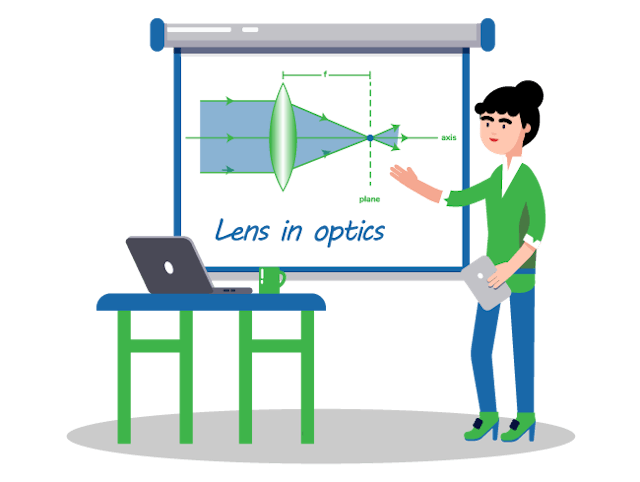Lens in Optics
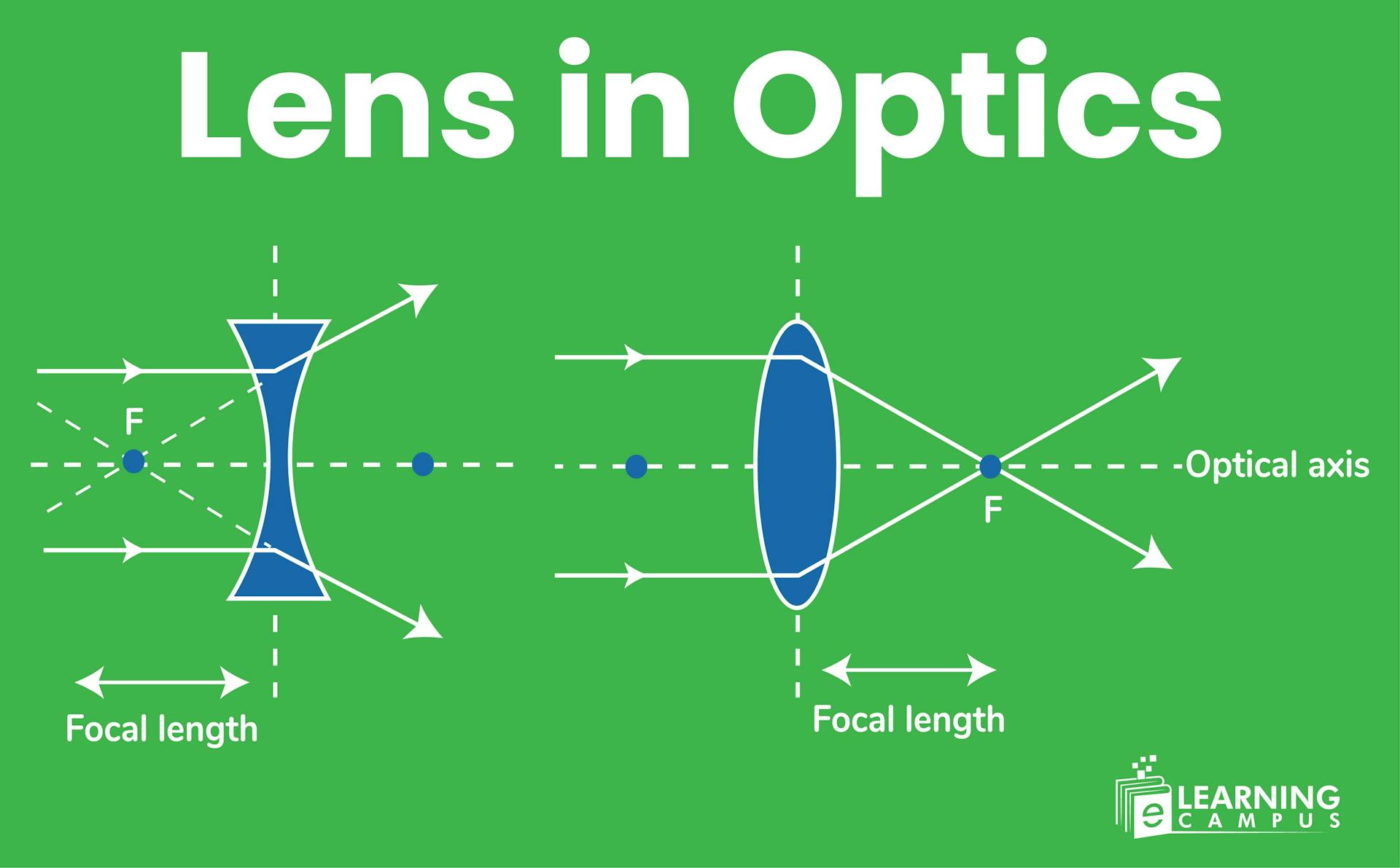
A lens in optics is a transparent optical element with curved surfaces that refracts light, causing it to converge or diverge. Optical lenses are fundamental components in various optical instruments like eyeglasses, cameras, microscopes, and telescopes.
In this comprehensive blog, you will learn what lenses are, their types, properties, and uses.
What are Lenses
A curved piece of glass used to refract light is called a lens. Lenses are transparent optical devices that refract or bend light to focus or disperse light rays, forming an image or magnifying an object. These are commonly made of glass or plastic and have at least one curved surface. A lens can be simple, which contains only one piece of transparent medium, or compound, which contains several simple lenses.
Types of Lenses
A light ray bends when it passes through a lens. There are two main types of lenses, named convex lenses and concave lenses. They are categorized on the basis of how they bend the light. Let’s discuss the lenses types in detail.
Convex Lens
A convex lens is a lens that has an outward curving surface. It means thicker in the middle and thinner at the edges. It converges the light beam passing through it, therefore known as the converging lens. These lenses converge light at the focal point, magnifying objects and improving vision.
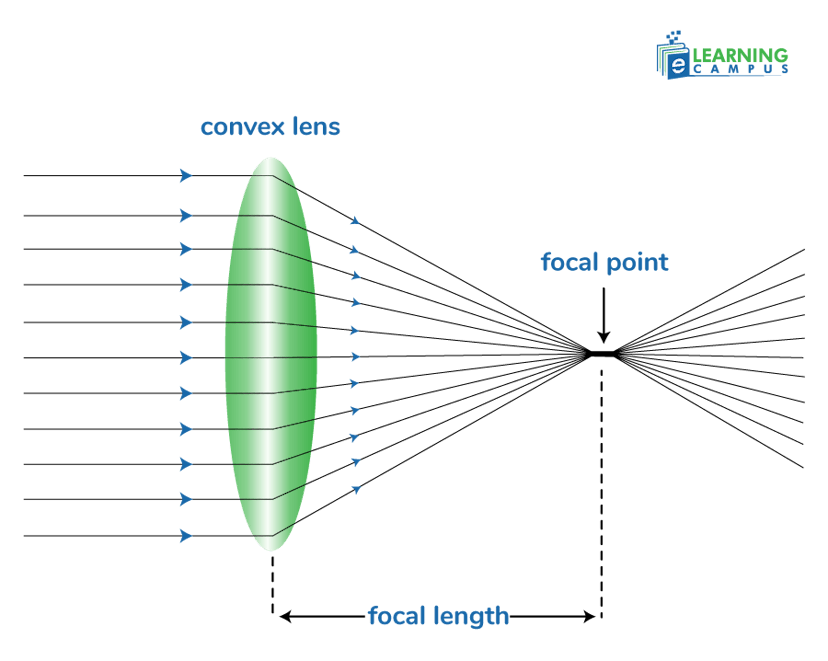
Convex Lens Examples
Convex lenses have various applications in our daily lives. Some common convex lens examples include magnifying glasses, eyeglasses for farsightedness, cameras, telescopes, microscopes, and projectors. The human eye also has a convex lens to focus light onto the retina.
Concave Lens
A concave lens has an inward curved structure. It means it is thinner at the center and thicker at the edges. It diverges the light ray that passes through it. Therefore, also known as the diverging lens. The concave lenses make objects look smaller than their actual size.
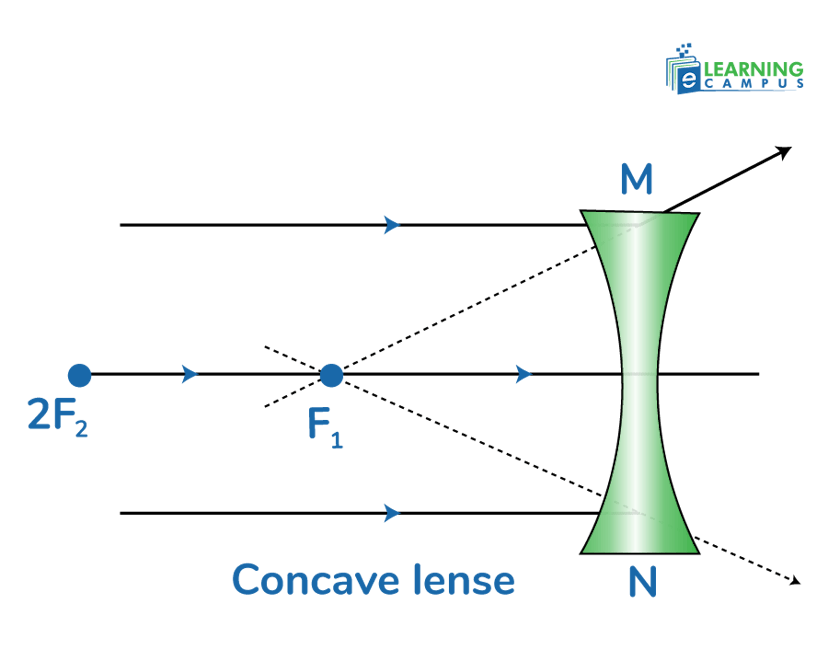
Terms Used In Lenses
To understand the structure and function of different types of lenses, one must learn and understand the terms related to the lenses. Let’s break down the concepts in detail with the diagram.
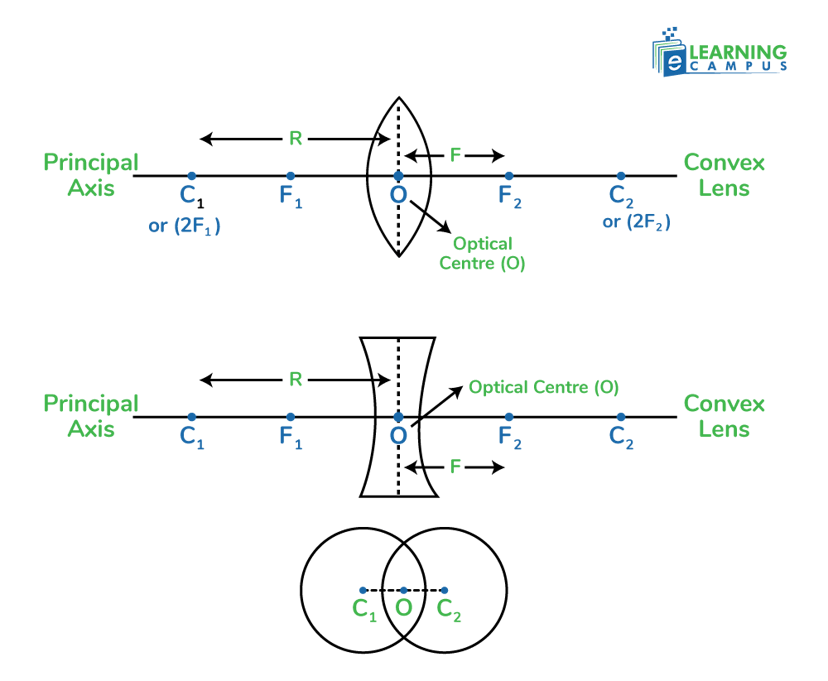
Centre Of Curvature
The center of curvature of a lens is the center of the sphere from which the lens's curved surfaces are a part. It is represented by C1 and C2.
Radius Of Curvature
The radius of curvature is the distance between the centre of curvature and the optical centre of a lens. It is represented by R.
Principal Axis
The principal axis of a lens is a straight line that passes through the center of the lens, connecting the centers of curvature of its two surfaces.
Optical Centre
The optical center is the center of a lens. It is a specific point on the lens through which light rays pass without deviation or bending. It is represented by O.
Principal Focus
The principal focus is the point where parallel rays of light converge or diverge after refraction through the lens. For a convex lens, the light will converge, and diverge in the case of a concave lens.
Focal Length
Focal length is the distance between a lens and the point where light rays converge or diverge
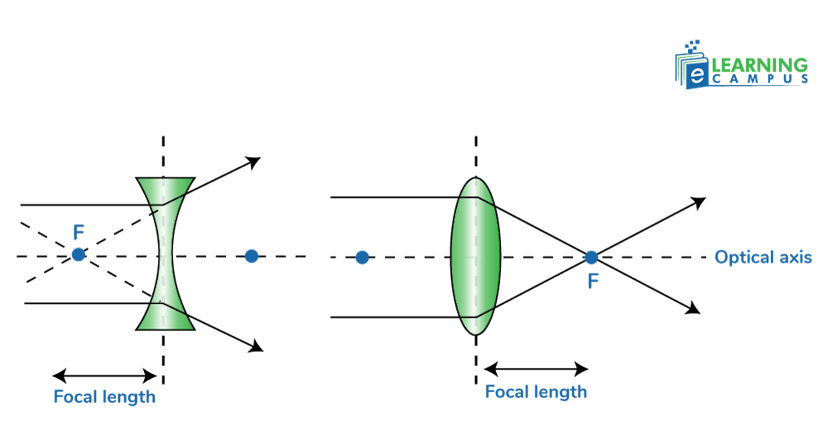
Aperture
The diameter of the lens that allows the light to pass through it is known as the aperture of the lens.
Optical Lens Formula
In optics, the lens formula shows the relationship between the distance of an object (u), the distance of an image (v), and the focal length (f) of the lens is expressed by the formula, known as the Lens formula. The formula of the optical lens is given as;
1u+1f=1v
This formula is applicable for both concave and convex lenses.
Uses of Lenses
Lenses have a wide range of uses in our daily lives. They are used in optical applications and other machines that make our lives easier. We look at the application of concave lens and a convex lens in detail.
Correcting Vision Defects
Eyeglasses and contact lenses utilize lenses to correct vision problems like nearsightedness (myopia) and farsightedness (hyperopia). Concave lenses are used to correct nearsightedness, while convex lenses are used for farsightedness.
Imaging and Optical Instruments
Different lenses are used in imaging and optical instruments.
- Cameras: Lenses are used in different kinds of cameras and are crucial for focusing light onto the image sensor, capturing sharp and detailed images.
- Telescopes: In telescopes, lenses are used to gather and focus light from distant objects. It makes objects clearer, allowing us to observe celestial bodies.
- Microscopes: The lenses used in microscopes help to magnify tiny objects. It has several medical and scientific uses. It assists in seeing microscopic details.
- Projectors: Lenses project images onto a screen, making them larger and visible to an audience.
- Binoculars: Binoculars are used to see objects at a distance with clarity. It combines lenses and prisms to provide a magnified view of distant objects.
Conclusion
In optics, a curved piece of glass used to refract light is called a lens. The two basic types of lenses have several uses. From human eyes to telescope lenses play a significant role in our daily lives.
